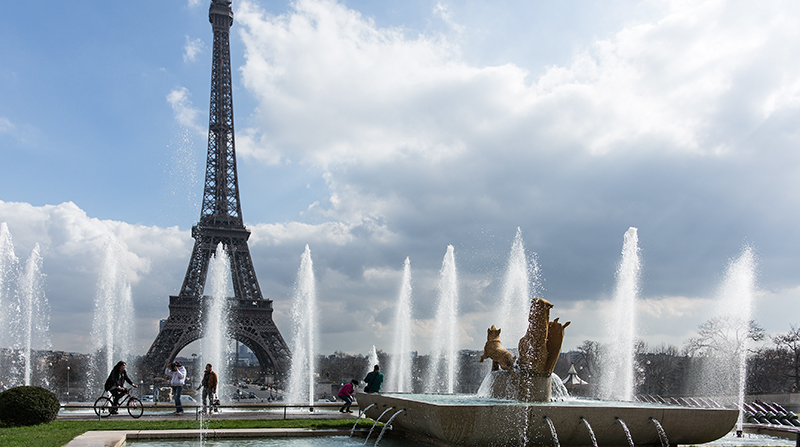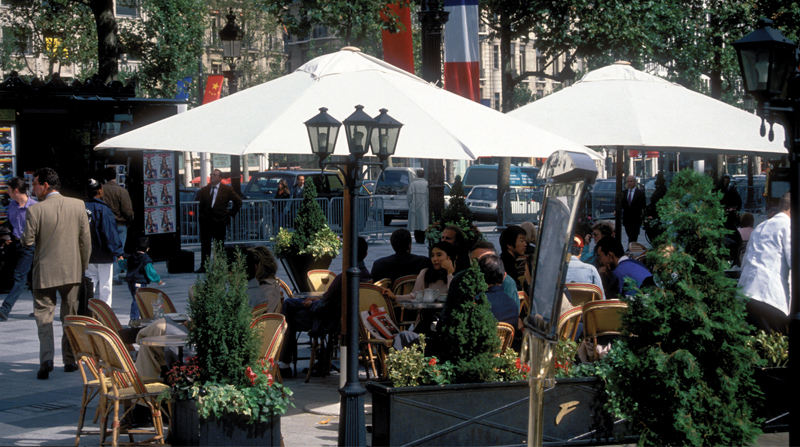
Filled with important art, luxurious hotels, unrivaled shopping and outstanding restaurants, Paris attracts foodies, fashionistas, art connoisseurs and everyone in between. Here are some tips to help make the most of your trip to the city.
Languages spoken in Paris
It’s important to know before you come to Paris that the French people take their language very seriously. There is even a governing body called the Academie Française that was founded hundreds of years ago for the purpose of protecting the French language and determining which modern words would be added each year.
Before you jet off, it’s always a good idea to buy a little guide book with commonly used French phrases. They are often spelled out phonetically, making the words much easier for the Anglophone tongue to pronounce.
To be courteous, try to learn how to say hello and ask locals if they speak English in French before diving in.
There are also many expats in Paris, and in some of the trendy restaurants in town you are bound to hear a handful of English-speaking patrons.
The best time to visit Paris
With an endless list of attractions, Paris is exciting year-round. Of course, the best time to visit depends on what you seek.
In the mild winter, you’ll find picturesque ice skating rinks scattered throughout the city — there’s even one on the first level of the Eiffel Tower. The shops and bistros are festively decorated with lights and garland, bringing a whole new meaning to the moniker “City of Light.” And the weather isn’t so bad, either: temperatures hover around 40 degrees Fahrenheit throughout the season.
While spring brings lots of rain, summer is beautiful. Days are in the high 70s and the sun doesn’t set until nearly 10 p.m. The numerous gardens are in bloom, and streets are filled with tourists.
That being said, August is probably not the best month to visit Paris for your first time, as many restaurants and shops are closed for the national vacation period.
What to pack for a trip to Paris
Considering the weather in Paris is unpredictable and rarely follows the rules of the seasons, it’s always a good idea to bring clothes that can be easily layered.
Light shirts and jackets for spring and summer are always a good choice, while in the winter you’ll need to bring some heavier layers. It’s always important to remember a jacket and an umbrella, as Paris has quite an extended rainy season.
A great pair of jeans, flats or cute sneakers, some comfortable tops, a light jacket and a purse that is big enough to fit your camera and the essentials is all you really need for the daytime.
Paris is a quite casual (yet chic) city, despite its lofty reputation for high fashion. Unless you’re eating at Alain Ducasse or something of the equivalent, then there aren’t many occasions where you’ll need a tux or cocktail dress.

A café on the Champs-Élysées, Photo Credit: Paris Tourist Office – Photographer E. Boucher
Tipping etiquette in Paris
In France, servers are paid a higher hourly wage than in America, but this is supposed to include gratuity. While service in Paris can often be quite abrupt, tipping is both welcomed and encouraged. Servers don’t mind answering the question, “Is tip included?”
You should expect to leave anywhere from 5 to 10 percent, depending on the meal (lunch or dinner), the type of restaurant (a corner cafe or a fine-dining establishment) and what you ordered (just a drink or a three-course meal).
Don’t forget that tipping is only possible in cash, as credit cards are run directly and there isn’t a space to write in gratuity on the receipt.
Public transportation in Paris
Navigating Paris may seem daunting at first, but the public transportation really does simplify getting from point A to point B. The thing to know about Parisian public transportation is that it closes early. Unlike NYC, where the subway runs all night, the metro in Paris closes around midnight on weeknights and at 1:30 a.m. on weekends, depending on which line you are using.
Buses are another convenient way to get around Paris, if you don’t mind taking a bit more time than the metro. Bus 95 is a great one to get you from Montmartre to Saint Germain, passing through the Louvre and across the Seine. Bus 80 takes you down the Avenue Montaigne and across the Champs Elysées, while bus 30 can take you all the way to Trocadéro. The line maps are pretty easy to understand, and a ticket you buy in the metro can also be used on a bus (but the reverse isn’t true — it’s a one-way system).
If you like to pedal, try Vélib, a public bike system that works on a day rate for up to 30 minutes of usage at a time. As long as you have a credit card with a chip in it, or are able to create an account online before arriving in Paris, you can rent bikes and go anywhere you desire.
